Impact of the diet in the gut microbiota after an inter-species microbial transplantation in fish
- PMID: 38369563
- PMCID: PMC10874947
- DOI: 10.1038/s41598-024-54519-6
Impact of the diet in the gut microbiota after an inter-species microbial transplantation in fish
Abstract
Inter-species microbial transplantations offer the possibility of transferring species-specific microbes and their associated functionality. As a conceptual approach, an intestinal microbiota transplant (IMT) between two marine carnivorous fish species that thrive in different environmental conditions was conducted: from donor Atlantic salmon (Salmo salar) to recipient gilthead seabream (Sparus aurata), after obliterating its basal microbiota with an antibiotic treatment. To confirm that the gut microbiota was able to recover after antibiotics without the influence of the diet, a group of gilthead seabream not submitted to the IMT was kept fasted as an internal control. To assess the effect of the diet after the IMT, two groups of gilthead seabream were respectively fed with their typical diet and with Atlantic salmon diet. At 36 days post-IMT, the gut of the individuals fed with their typical diet was dominated by the feed-associated bacteria, while those fed with the salmon diet had developed a unique microbiota from the convergence of the diet, donor, and recipient microbiota. These results suggested that an intestinal microbiota transplantation may be effective if the basal microbiota from the gut is first cleared and a targeted dietary modification is provided to maintain and enrich the novel bacteria species over time.
© 2024. The Author(s).
Conflict of interest statement
The authors declare no competing interests.
Figures
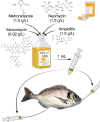
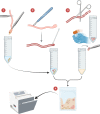

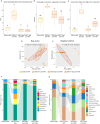
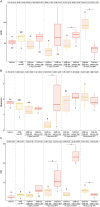
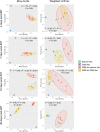
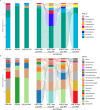

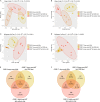
Similar articles
-
Diet, Immunity, and Microbiota Interactions: An Integrative Analysis of the Intestine Transcriptional Response and Microbiota Modulation in Gilthead Seabream (Sparus aurata) Fed an Essential Oils-Based Functional Diet.Front Immunol. 2021 Mar 4;12:625297. doi: 10.3389/fimmu.2021.625297. eCollection 2021. Front Immunol. 2021. PMID: 33746962 Free PMC article.
-
Effects of hydrolyzed fish protein and autolyzed yeast as substitutes of fishmeal in the gilthead sea bream (Sparus aurata) diet, on fish intestinal microbiome.BMC Vet Res. 2020 Apr 22;16(1):118. doi: 10.1186/s12917-020-02335-1. BMC Vet Res. 2020. PMID: 32321508 Free PMC article.
-
The impact of diets containing Hermetia illucens meal on the growth, intestinal health, and microbiota of gilthead seabream (Sparus aurata).Fish Physiol Biochem. 2024 Jun;50(3):1003-1024. doi: 10.1007/s10695-024-01314-9. Epub 2024 Feb 22. Fish Physiol Biochem. 2024. PMID: 38386264 Free PMC article.
-
Food determines ephemerous and non-stable gut microbiome communities in juvenile wild and farmed Mediterranean fish.Sci Total Environ. 2023 Sep 1;889:164080. doi: 10.1016/j.scitotenv.2023.164080. Epub 2023 May 16. Sci Total Environ. 2023. PMID: 37201821
-
Effect of short chain fructooligosaccharides (scFOS) on immunological status and gut microbiota of gilthead sea bream (Sparus aurata) reared at two temperatures.Fish Shellfish Immunol. 2016 Feb;49:122-31. doi: 10.1016/j.fsi.2015.12.032. Epub 2015 Dec 22. Fish Shellfish Immunol. 2016. PMID: 26721230
Cited by
-
Comparative study of the gut microbial communities collected by scraping and swabbing in a fish model: a comprehensive guide to promote non-lethal procedures for gut microbial studies.Front Vet Sci. 2024 Mar 22;11:1374803. doi: 10.3389/fvets.2024.1374803. eCollection 2024. Front Vet Sci. 2024. PMID: 38585300 Free PMC article.
-
A review on comparative analysis of marine and freshwater fish gut microbiomes: insights into environmental impact on gut microbiota.FEMS Microbiol Ecol. 2025 Jan 7;101(1):fiae169. doi: 10.1093/femsec/fiae169. FEMS Microbiol Ecol. 2025. PMID: 39719366 Free PMC article. Review.
-
Cichlid fishes are promising underutilized models to investigate helminth-host-microbiome interactions.Front Immunol. 2025 Feb 13;16:1527184. doi: 10.3389/fimmu.2025.1527184. eCollection 2025. Front Immunol. 2025. PMID: 40018030 Free PMC article. Review.
-
Morpho-physiological digestive features of genetically closely related sympatric lacustrine whitefish forms with different feeding habits.Fish Physiol Biochem. 2025 Jan 18;51(1):34. doi: 10.1007/s10695-024-01440-4. Fish Physiol Biochem. 2025. PMID: 39825033
-
Beyond Microbial Variability: Disclosing the Functional Redundancy of the Core Gut Microbiota of Farmed Gilthead Sea Bream from a Bayesian Network Perspective.Microorganisms. 2025 Jan 17;13(1):198. doi: 10.3390/microorganisms13010198. Microorganisms. 2025. PMID: 39858966 Free PMC article.
References
MeSH terms
Grants and funding
LinkOut - more resources
Full Text Sources
Research Materials

